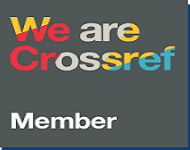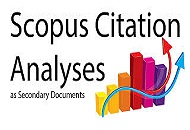Examining the Influence of Principal Leadership on School Effectiveness : A Comprehensive Analysis in The Context of Primary Schools in Surabaya
DOI:
https://doi.org/10.33394/jp.v11i4.12199Keywords:
Principal Leadership, School Effectiveness, Primary School.Abstract
References
Cohen, J., Mccabe, E. M., Michelli, N. M., & Pickeral, T. (2009). School climate: Research, policy, practice, and teacher education. Teachers College Record, 111(1), 180–213. https://doi.org/10.1177/016146810911100108
Dennis, R. S., & Bocarnea, M. (2005). Development of the servant leadership assessment instrument. Leadership & Organization Development Journal, 26(8), 600–615. https://doi.org/10.1108/01437730510633692
Hair, J., Hollingsworth, C. L., Randolph, A. B., & Chong, A. Y. L. (2017). An updated and expanded assessment of PLS-SEM in information systems research. Industrial Management and Data Systems, 117(3), 442–458. https://doi.org/10.1108/IMDS-04-2016-0130
Hellström, L., & Hagquist, C. (2021). School effectiveness in Sweden: psychometric properties of an instrument to measure pedagogical and social climate (PESOC) focusing on pedagogical leadership. International Journal of Leadership in Education, 24(6), 855–875. https://doi.org/10.1080/13603124.2019.1623921
Hidayat, N., & Wulandari, F. (2020). The impact of leadership behavior on school performance. Cakrawala Pendidikan, 39(3), 493–506. https://doi.org/10.21831/cp.v39i3.31005
Huber, S. G., & Hiltmann, M. (2011). Competence Profile School Management (CPSM) - an inventory for the self-assessment of school leadership. Educational Assessment, Evaluation and Accountability, 23(1), 65–88. https://doi.org/10.1007/s11092-010-9111-1
Huguet, B. C. S. (2017). Effective leadership can positively impact school performance. On the Horizon, 25(2), 96–102. https://doi.org/10.1108/OTH-07-2016-0044
Iyer, P., & Moore, R. (2017). Measuring learning quality in Ethiopia, India and Vietnam: from primary to secondary school effectiveness. Compare, 47(6), 908–924. https://doi.org/10.1080/03057925.2017.1322492
Javornik, Å ., & KlemenÄiÄ Mirazchiyski, E. (2023). Factors Contributing to School Effectiveness: A Systematic Literature Review. European Journal of Investigation in Health, Psychology and Education, 13(10), 2095–2111. https://doi.org/10.3390/ejihpe13100148
Khun-Inkeeree, H., Yusof, M. R., Maruf, I. R., Mat, T. R. T., & Sofian, F. N. R. M. (2022). Enhancing School Effectiveness by Implementing Identified and Intrinsic Motivation Among Primary School Teachers. Frontiers in Education, 7(May). https://doi.org/10.3389/feduc.2022.852378
Kythreotis, A., Pashiardis, P., & Kyriakides, L. (2010). The influence of school leadership styles and culture on students’ achievement in Cyprus primary schools. Journal of Educational Administration, 48(2), 218–240. https://doi.org/10.1108/09578231011027860
Leithwood, K. & Jantzi, D. (2000). The effects of transformational leadership on student engagement with school. Journal of Education and Administration, 38(2), 112–129.
Leithwood, K., Sun, J., Schumacker, R., & Hua, C. (2023). Psychometric properties of the successful school leadership survey. Journal of Educational Administration, 61(4), 385–404. https://doi.org/10.1108/JEA-08-2022-0115
Mangan, J., Gregory, O., & Lalwani, C. (2001). Education, Training and the Role of Logistics Managers in Ireland. International Journal of Logistics Research and Applications, 4(3), 313–327. https://doi.org/10.1080/13675560110084120
Marks, H. M., & Printy, S. M. (2003). Principal Leadership and School Performance: An Integration of Transformational and Instructional Leadership. Educational Administration Quarterly, 39(3), 370–397. https://doi.org/10.1177/0013161X03253412
Mulyani, H., Meirawan, D., & Rahmadani, A. (2020). Increasing school effectiveness through principals’ leadership and teachers’ teaching performance, is it possible? Cakrawala Pendidikan, 39(2), 279–292. https://doi.org/10.21831/cp.v39i2.28864
Olaifa, A. S., & Awodiji, O. A. (2023). Nexus between Principals’ Instructional Responsibilities and Secondary School Effectiveness. International Journal of Theory and Application in Elementary and Secondary School Education, 5(1), 63–77. https://doi.org/10.31098/ijtaese.v5i1.1186
Preston, C., Goldring, E., Guthrie, J. E., Ramsey, R., & Huff, J. (2017). Conceptualizing Essential Components of Effective High Schools. Leadership and Policy in Schools, 16(4), 525–562. https://doi.org/10.1080/15700763.2016.1205198
Robert, C. (2005). Education : RELATIONSHIPS BETWEEN MEASURES OF LEADERSHIP AND ... Página 1 de 7 Education : RELATIONSHIPS BETWEEN MEASURES OF LEADERSHIP AND ... Página 2 de 7. Leadership, 1979, 1–7.
Slater, L. (2004). Collaboration: A framework for school improvement. International Electronic Journal for Leadership in Learning, 8, 1–13.
Sugiyono. (2012). Metode Penelitian Kuantitatif Kualitatifdan R&D. Alfabeta.
Uline, C. L., Miller, D. M., & Tschannen-Moran, M. (1998). School Effectiveness: The Underlying Dimensions. Educational Administration Quarterly, 34(4), 462–483. https://doi.org/10.1177/0013161X98034004002
Downloads
Published
How to Cite
Issue
Section
Citation Check
License
License and Publishing Agreement
In submitting the manuscript to the journal, the authors certify that:
- They are authorized by their co-authors to enter into these arrangements.
- The work described has not been formally published before, except in the form of an abstract or as part of a published lecture, review, thesis, or overlay journal.
- That it is not under consideration for publication elsewhere,
- That its publication has been approved by all the author(s) and by the responsible authorities tacitly or explicitly of the institutes where the work has been carried out.
- They secure the right to reproduce any material that has already been published or copyrighted elsewhere.
- They agree to the following license and publishing agreement.
Copyright
Authors who publish with Jurnal Paedagogy agree to the following terms:
- Authors retain copyright and grant the journal right of first publication with the work simultaneously licensed under a Creative Commons Attribution License (CC BY-SA 4.0) that allows others to share the work with an acknowledgment of the work's authorship and initial publication in this journal.
- Authors are able to enter into separate, additional contractual arrangements for the non-exclusive distribution of the journal's published version of the work (e.g., post it to an institutional repository or publish it in a book), with an acknowledgment of its initial publication in this journal.
- Authors are permitted and encouraged to post their work online (e.g., in institutional repositories or on their website) prior to and during the submission process, as it can lead to productive exchanges, as well as earlier and greater citation of published work.
Licensing for Data Publication
-
Open Data Commons Attribution License, http://www.opendatacommons.org/licenses/by/1.0/ (default)






